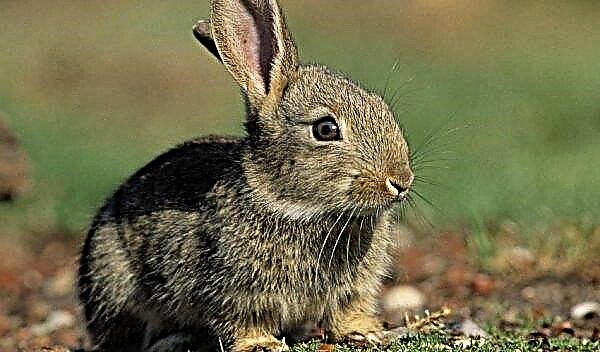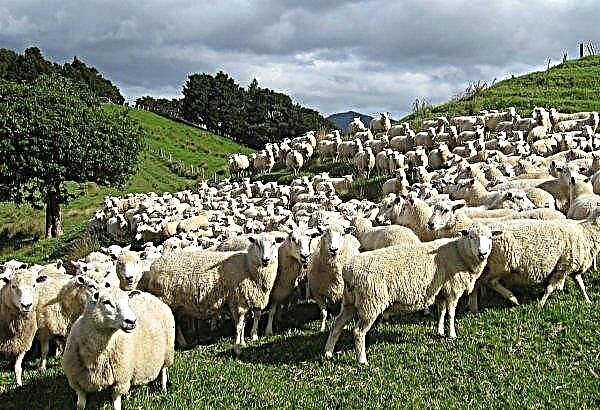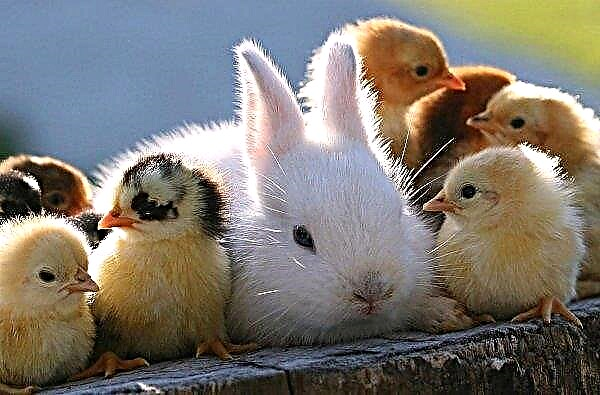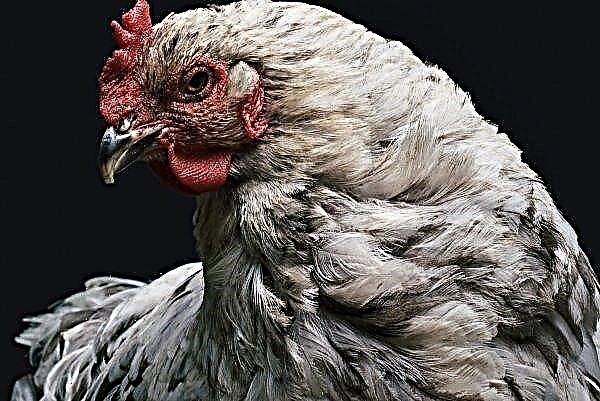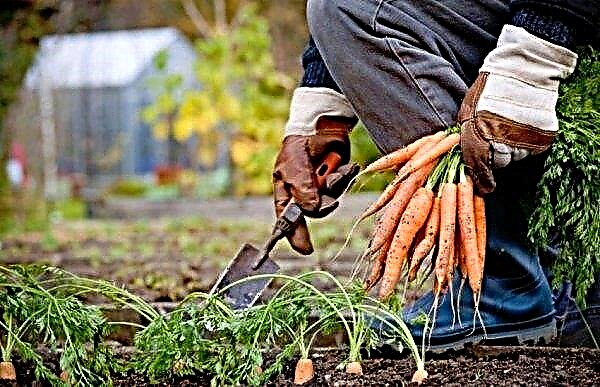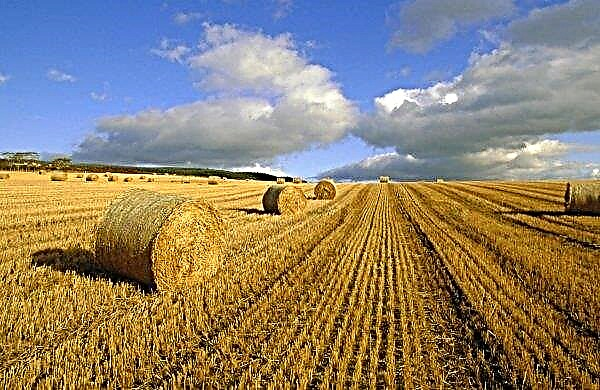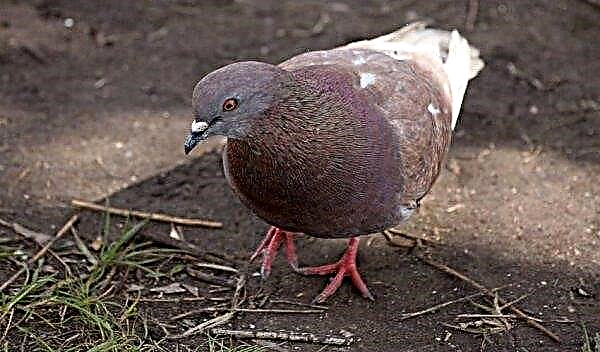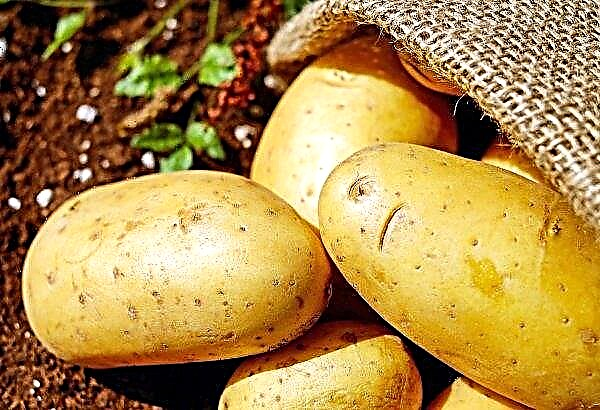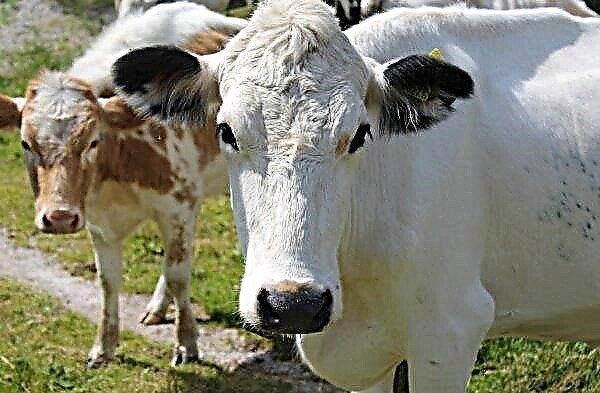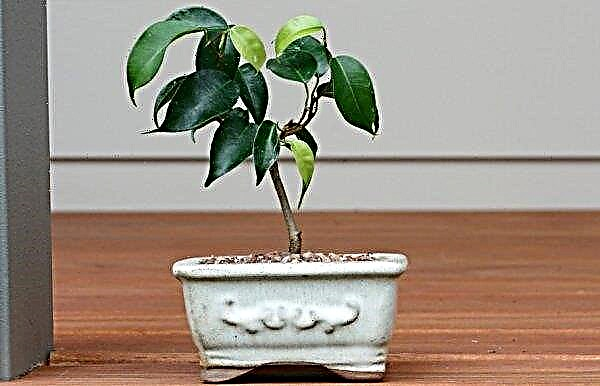It is difficult to find a person who would not appreciate the taste characteristics of the fragrant berries of black currant, as well as their useful properties: the fruits of the culture occupy a leading position in the content of vitamin C, overtaking even lemon. However, due to the large number of varieties, it is difficult to choose the most suitable for yourself. Consider below the variety of black currant Pygmy, whose qualities have earned the recognition of many experienced gardeners.
Description of the variety of black currant Pygmy
Pygmy belongs to the middle early self-fertile varieties, and its yield indicators, as well as taste characteristics are at the highest level. The bushes of this currant are self-pollinated plants, and therefore fruiting occurs once a year - regularly and without the need for an additional pollinator.
Due to the long flowering period, the duration of which is more than 1 month, the ripening of berries occurs gradually, so the harvest can last up to 3-4 weeks.Did you know? Not only blackcurrant berries are used in food, but also its leaves - due to the high content of essential oils, they often act as flavoring additives in the preparation of meat or fish dishes.
Selection history
The Pygmy variety is the result of the fruitful activity of the breeder V. S. Ilyin, who collaborates with the South Ural Research Institute of Gardening and Potato. In the description, it is indicated that the seedlings of the dove and Bredthorpe were protosorts. In the late 90s, a new variety was introduced into the State Register and received regionalization in regions with continental and temperate continental climates - the Volga-Vyatka, Ural, West Siberian, East Siberian and Far Eastern.
Appearance, characteristics of berries, ripening time, yield
The bushes of the variety are compact in size, slightly sprawling branches and a medium thickened crown. Plant height rarely exceeds 1.5 m. Young shoots have a green-pink hue, with large glossy foliage of bright green color. The leaves are rounded and have a triangular notch. The buds of the bush are of medium size and oval-rounded in shape. Their color is brown.
Did you know? Blackcurrant berries are often used in the preparation of a natural dye of blue-violet color.
Inflorescences of a currant of a pale shade and small sizes. The main form of flowers is saucer-shaped. One brush contains up to 15–20 berries.
The fruits of the currant of this variety grow on a thin green stalk, they are quite large - the mass can be from 2 to 8 g. The skin is black in color, thin and smooth. According to reviews, the taste characteristics of Pygmy currant are high, with pronounced sweetness and aroma.
In its composition, the fruits of currant are an indispensable product for the human body. 1 berry contains a whole complex of vitamins (vitamins A, D, E, K, a group of vitamins B), as well as micro and macro elements (calcium, potassium, silicon, magnesium, sodium, sulfur, phosphorus, boron, vanadium, iodine, cobalt , iron, copper and many others).
The ripening time of the crop depends heavily on the care of the plant and the growing conditions - on average, fruiting occurs in the period from 1 to 1.5 months (beginning - mid-July). The yield of the variety is high - from 2.5 to 5 can be harvested from one bush 5 kg of selected berries.Advantages and disadvantages of the variety
- Among the main advantages of Pygmy are the following:
- high cold resistance and drought tolerance;
- variety self-fertility;
- persistent immunity to many fungal diseases;
- high taste qualities of berries;
- universality and large sizes of fruits.
Currants of this variety do not have special drawbacks: the only thing that can be distinguished is the low resistance to damage by the kidney tick and Septoria.
Agricultural technology
Each stage of agricultural activities is an important condition in obtaining high-quality crops in large quantities. Despite all the unpretentiousness of currants, special attention should be paid to the rules of planting and further care of the plant.
Seat selection and landing
When starting to choose a place for planting, it should be noted that currants are light and heat-loving plants that cannot develop in too moist, flooded soil. For these reasons, the best option would be a flat area on the southwestern side of the garden, with slightly acidic soil and groundwater lying at a depth of 1-1.5 m.
 Any time is suitable for planting when the plant is in a period of active growth - mid-late spring, early-mid-autumn, and soil temperature - over + 10 ° C.
Any time is suitable for planting when the plant is in a period of active growth - mid-late spring, early-mid-autumn, and soil temperature - over + 10 ° C.
The most suitable seedlings will be annual plants whose height has reached 35–40 cm. The aerial part should be without visible damage and growths, and the root system must have elasticity and be moistened (its length can reach 20 cm).
Important! According to GOST, leaves should be completely absent on seedlings.
The process of planting seedlings consists of several stages:
- The soil at the prepared site is pre-excavated to remove stones, weed grass and any other debris from the site.
- Dig a landing hole, the size of which is 40 cm in depth and 60 cm in diameter.
- The earth from the hole is divided into two parts: the top layer, fertile, is mixed with 1 bucket of compost, as well as 200 g of superphosphate and 60 g of potassium sulphide. Further, the fertilized soil is again poured into the planting pit.
- Immediately before planting, the roots of the seedlings are dipped in a clay mash.
- The seedling is shaken and exposed to the soil, and then gently covered with soil. In this case, the root neck of the plant should be at a level of 5-6 cm above the surface.
- Given the height of a mature bush, the distance between seedlings should not be less than 1.5 m.
- Planted seedlings are trimmed to 2-3 developed buds, which is about 7 cm in length. This will ensure a good branching of the bush in the future.
- Around the bush, a basal circle is formed, the diameter of which is about 35–40 cm.
- The first watering is carried out at the rate of 8 liters per 1 bush.
- After moistening, the soil is mulched with a layer of up to 7 cm, using compost or sawdust.
 According to the rules for planting currants, seedlings must be in the soil either vertically or at an angle of 45 °, which will provide the largest number of shoots next year.
According to the rules for planting currants, seedlings must be in the soil either vertically or at an angle of 45 °, which will provide the largest number of shoots next year.Care
Further care is not very difficult and consists of several main stages:
- Watering - the described variety of currant is characterized by a high level of drought tolerance, however, during the formation of the ovaries, it is in acute need of sufficient water. The best option for irrigation is sprinkling - up to 50 liters per 1 m². In a period of sustained heat, the frequency of the procedure can increase to weekly. With the onset of autumn, humidification is carried out 1 time after feeding. The best time for watering will be the evening after sunset. It is recommended to collect water in the morning, so that during the day it has time to stand and warm up.
- Soil treatment - includes frequent loosening (especially after watering, in order to avoid the formation of a crust). In this case, one should take into account the shallow occurrence of the root system of the bush. It is also recommended to weed the weeds and systematically mulch the soil of the root circle - this procedure will not only help maintain the necessary moisture in the soil, but also act as a fertilizer and prevent the appearance of weed grass.
- Top dressing - applied several times per season. The first time the soil is fertilized before planting seedlings (50 ml of urea solution), the second time - before the formation of berries (5 g of boric acid, 5 g of potassium permanganate, 30 grams of copper sulfate are diluted in 10 l of water). Each component must be diluted separately in 1 liter of water and only then mix everything.
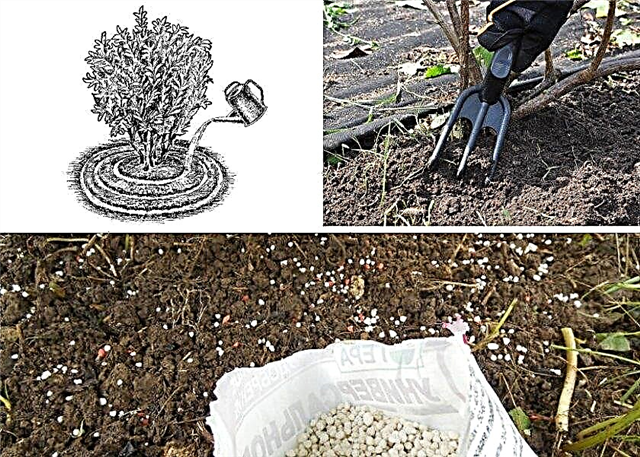
Pest and Disease Control
Despite the general good resistance of the Pygmy variety to various fungal diseases, every gardener should know the main signs of the disease and be able to choose the right treatment. Among the most common diseases, the following are distinguished:
- Anthracnose - fungus affecting the deciduous cover of bushes. It has the appearance of blurry dark brown spots, which eventually cover the entire leaf plate, due to which the foliage dries and falls. Affected plants cease to produce young shoots, and the quality and quantity of the crop decreases. To combat anthracnose, the affected fragments are removed from the bush and treated with a solution of copper sulfate (40 g per 1 bucket of water) or copper chloroxide in the same proportions. For 1 bush, about 2 liters of solution will be required.
- Sphere library (powdery mildew) - a fungal disease that affects all the aerial parts of the bush (foliage, shoots, fruits and their ovaries). At the initial stage, the affected areas are covered with a white powdery coating, which subsequently acquires a dark brown color and becomes dense. The disease leads to deformation of the shoots and their drying out, twisting of the leaves and decay of the fruit. In the fight against powdery mildew, all affected fragments of the bush are removed, and the plant itself and the soil beneath it are sprayed with a solution of copper sulfate in a ratio of 300 g per 10 l of water. Also, good results are shown by treatment of the culture with sulfur, Fundazol. All types of treatments should be completed no later than 1.5–2 weeks before the expected date of harvest.
- Reversion (terry) - a viral disease that leads to grinding petals of inflorescences, their acquisition of a purple color and the absence of ovaries. As a fight, only the removal of the infected bush is possible. Prevention of terry will be additional feeding with phosphorus and potassium, as well as foliar feeding with a solution of manganese, boron and molybdenum. At the same time, the introduction of nitrogen fertilizers, on the contrary, provokes the development of the disease.
- Septoria (white spotting) is a fungus that manifests itself in the form of numerous spots that are framed by a dark brown border. Over time, numerous black dots appear on the spots, and the affected leaves curl and dry out. In the case of a disease, all affected areas of the bush are removed, and the plant itself is treated with a solution of copper sulfate (40 g of the drug per 10 liters of water). As a preventive measure, the soil should be fertilized with manganese sulfate and a complex mineral fertilizer.
- Ball rust - a fungus, when damaged, the leaves of the currant become covered with orange spots. The development of the disease becomes the cause of drying and falling of leaves, as well as stopping the formation of berries. In the fight against the disease, a three-time treatment is carried out with a 1% solution of Bordeaux fluid - 1 time before the leaves bloom and 2 times after flowering, with an interval of 10 days. To increase the resistance of currant bushes to glass rust in the spring and autumn, it is recommended that the soil be fertilized.
Blackcurrant bushes also often become the object of attention of various pests, among which the most common are:
- Sheet gall midge - an insect whose larvae feed on young foliage. The attack of these pests results in the death and decay of the deciduous cover, as well as the development of lateral kidneys. When the first signs of a gall midge attack are detected, damaged shoots are cut from the bushes and burned. It is also recommended to carry out the mulching procedure using peat chips (layer thickness - 6 cm) and sow nectariferous plants near the bushes. Under the condition of severe infection, the bushes are treated with 0.3% Karbofos solution.
- Currant bark - the larvae of these pests feed on shoots, gnawing directly into their core. The result of the attack is the complete drying out of the branches and a decrease in yield. In the fight against goldfish, damaged shoots are cut and burned. Prevention is timely and regular pruning of bushes.
- Spider mite - insects feed on the juice of foliage, simultaneously covering it with cobwebs. As a result, the damaged leaf cover turns yellow and dies. To control pests, insect acaricides are used (carried out after flowering), as well as folk remedies (infusion of tobacco or wormwood).
- Kidney tick - an insect that penetrates the kidneys in order to feed. Damage can be noted by the characteristic shape of the kidneys - they become swollen-rounded, and the leaves that appear have a pale color and are deformed. To combat the tick infestation in early spring, all affected shoots are removed from the bushes and burned. As a deterrent, onions and garlic are planted next to the currant bushes.
- Kidney moth - insects, eating kidneys and berries, lead to their death and decay. As a struggle and prevention, a systematic anti-aging pruning of bushes is used, as well as treatment with “Karbofos” (no more than 2 times per season).
Trimming and shaping a bush
The procedure for pruning the bushes of the Pygmy currant is recommended for annual conducting - this is explained by the possibility of the crop to set fruit only on last year's growth of branches. The optimal time is considered to be the autumn period, after the leaves fall. In addition, with the onset of spring, frozen and broken shoots are removed.
Important! When trimming, it is recommended to trim all shoots whose age has reached 6 years.
Trimming consists of the main steps:
- The next year, after the first pruning (immediately after planting), the bush gives about 6 new shoots - of which only 4 of the strongest should be left.
- In the third year of life, plants leave 3 shoots, annuals and 6 shoots, two-year-olds.
- For 4 years, the bush will consist of 3-4 shoots from each year.
- Subsequently, no more than 20 branches of all ages are left on the bush to avoid thickening.

Preparing for the winter
Pygmy blackcurrant is characterized by high winter hardiness, which gives it the ability to calmly tolerate a drop in temperature to –25 ° С. However, there are many regions where winter is characterized by more intense cold, therefore, in order to avoid freezing of bushes and their death, the plants are prepared for winter, which consists of several stages:
- Currant bushes are bent to the ground and fixed with a load. Most often bricks or tiles are used as cargo. In this case, the plants will be under the snow, which will help them not to freeze and protect them from drafts.
- When waiting for severe frosts, the bushes are dug up with earth - it will act as a natural heater.
- Wrapping - agrofibre is used as insulation, which, if necessary, can be laid with mineral wool. The main thing to consider is the possibility of unhindered access of air to branches that can die without oxygen.
Video: preparing currants for winter
Harvesting and transportation of the crop, shelf life of berries
Harvesting currants is carried out in warm, not rainy weather, since the shelf life of wet berries is much shorter. Gather currants with tassels and put them in a shallow and wide container so that the berries do not crumble under their own weight. If transportation is necessary, the collection is carried out in advance - during the period when the fruits have not acquired intense color.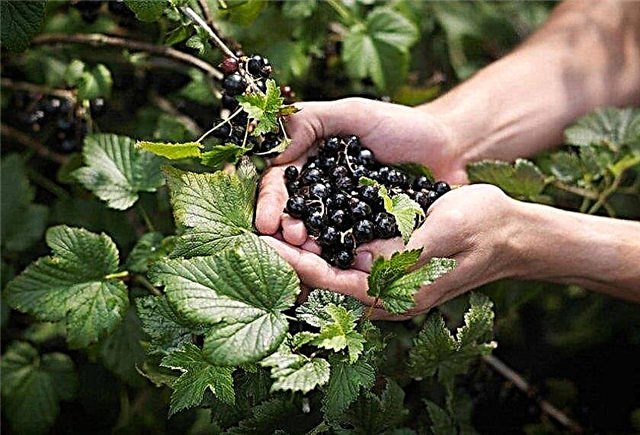
Currant Pygmy has a fairly hard skin, and therefore is characterized by high stubbornness. The shelf life of berries directly depends on temperature indicators:
- at a temperature of +10 ... + 12 ° С currants can be stored for 12-14 days;
- in the refrigerator, at a temperature of about +1 ... + 3 ° С, the period may increase up to 40–45 days;
- at temperatures below –1 ...– 3 ° С, berries can be stored for up to 3 months.
When freezing in a freezer, the temperature in which drops below –18 ° C, the shelf life of currants can be several years.
Growing black currant Pygmy does not entail any special difficulties. The main thing is to adhere to the basic agrotechnical rules for care. As a reward, gardeners receive a sweet and aromatic rich harvest of berries that are universally applicable. Despite the storage method, currants retain their beneficial properties, which are so necessary for the body of both an adult and a child.

